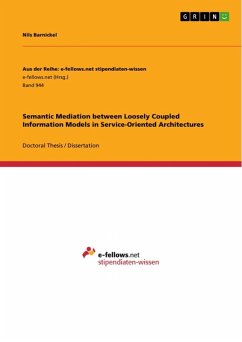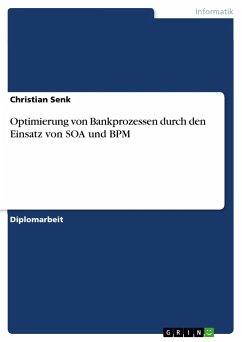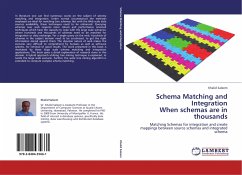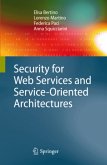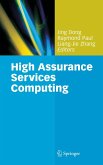Doctoral Thesis / Dissertation from the year 2011 in the subject Computer Science - Commercial Information Technology, grade: Sehr gut, Technical University of Berlin (Fakultät IV - Elektrotechnik und Informatik), language: English, abstract: The last two decades have shown a major shift from stand-alone to networked information technology (IT) systems. Consequently, the effective and efficient achievement of interoperability is a key factor to enable seamless business process chains and networks across intra- and inter-organizational boundaries. Thereby, interoperability can be understood along three dimensions: technical, semantic and organizational interoperability.While the concept of service-oriented architectures (SOA) and widely accepted Web service standards have benefited technical interoperability in recent years substantially, managing and integrating semantic differences in heterogeneous distributed environments remains critical and cost intensive. In order to preserve the precise meaning as data is moved from one IT system to another, explicit formal information models in terms of ontologies have evolved as the concept of choice from academia to first industry adoption. However, it has been recognized that the dominant approach of developing a common, globally shared ontology as an information model standard has turned out to be limited in real world cross-domain environments. Organizational boundaries with regard to consensus degree and the complexity deriving from inherent domain-specific differences in requirements force a coexistence of independently managed but however semantic interoperable information models.In order to address this challenge, the guiding idea of this work is to transfer the principle of loose coupling to the semantic level. In particular, the goal of this thesis is to contribute to the reduction of complexity in semantic system integration by developing an effective and efficient approach for semantic interoperabilityin large-scale SOA landscapes based on semantic mediation between loosely coupled information models. Moreover, this work shows how emerging semantic technologies can contribute to the instantiation of this concept exploiting their capabilities to explicitly express semantics. The developed approach is evaluated based on a case study of an exemplary distributed organization. It is shown how the approach of semantic mediation between loosely coupled information models can be applied in practice and which benefits can be generated with regard to achieving effective and efficient semantic interoperability in large-scale SOA landscapes.
Bitte wählen Sie Ihr Anliegen aus.
Rechnungen
Retourenschein anfordern
Bestellstatus
Storno

